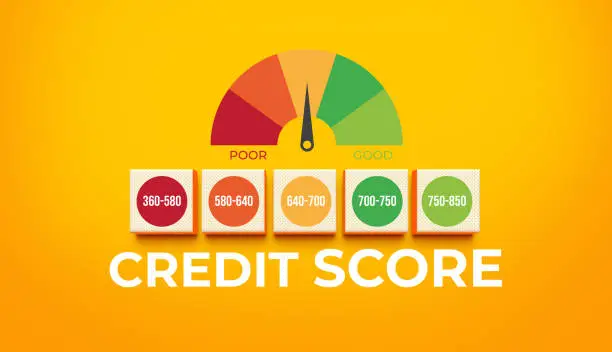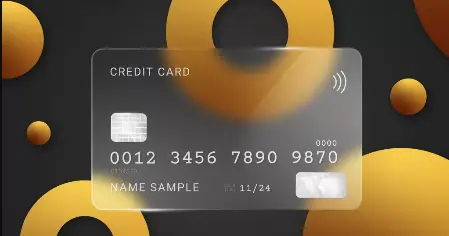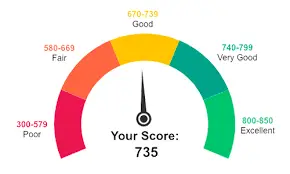Improve Your Credit Score in the United Arab Emirates: The Complete Manual for Sensible Credit Card Use
Your credit score is more than just a number in the dynamic economy of the United Arab Emirates; it is your financial passport.
A high credit score is the key to getting the greatest interest rates and loan approvals, whether you’re looking for a personal loan for a business endeavor, a new automobile, or a home purchase.
And central to constructing that score? Your credit card.
Credit card misuse can result in debt and a tarnished credit record. However, when used properly, it’s the most effective tool in your financial toolbox for creating a flawless credit history. This comprehensive tutorial will demonstrate how to use your credit card to raise your credit score in the United Arab Emirates.

Let’s start with the basics: what is a UAE credit score? Your creditworthiness is shown by your credit score, which is a three-digit figure that normally ranges from 300 to 900. The Al Etihad Credit Bureau (AECB), the UAE’s official credit reporting organization, determines it. This score is used by lenders to rapidly evaluate your risk before making a loan.
A better score (usually 700+) indicates that you are a trustworthy, low-risk borrower, which increases your chances of getting approved for a loan and lowers your interest rates. • Better credit card deals with greater rewards and bigger limits. Having a lower score makes it more difficult and costly to get credit because it indicates that you might be a high-risk borrower
The Credit Card Connection: How Your Card Impacts Your Score
One of the main sources of information for the AECB is your credit card activity. This is how it has a direct impact on your score: 1.The most crucial factor (35%) is payment history: Do you consistently make your credit card payments on time? The single most important factor in achieving a high score is making regular, on-time payments. A single late payment might have serious consequences. 2. The Credit Utilization Ratio, sometimes known as the “Magic” Number (30%), indicates what proportion of your available credit limit you are currently using. Your utilization ratio is 30%, for instance, if your total credit limit on all of your cards is AED 50,000 and your total balance is AED 15,000.
3. The Golden Rule: Don’t use more than 30% of your entire allotment. For a great score, try to get 10% or less. High utilization might reduce your score and indicates a reliance on credit. 4. Credit History Length (15%): The longer you have used and owned a credit card properly, the better. It exhibits stability. For this reason, even if you don’t use your oldest credit card often, it’s usually a good idea to keep it active. 5. New Credit and Credit Mix (10% each): It can be advantageous to have a good variety of credit forms, such as a mortgage, auto loan, and credit card. However, as it shows financial strain, applying for several new credit cards or loans in a short amount of time will lower your score.
Your Action Plan: Using Credit Cards to Build a Stellar Score
Let’s now convert this understanding into a methodical approach.
Step 1: Always pay your bills on time. This cannot be negotiated. To prevent any unintentional missed payments, set up automatic payments (standing instructions) from your bank account for at least the bare minimum. However, always pay your entire statement balance on the due date to get the greatest results and prevent interest costs. Pro Tip: As a backup, set a calendar reminder a few days prior to your due date.
Step 2: Master Your Credit Utilization Ratio
Strategic spending can help with this. • Spend Well Within Your Means: You shouldn’t spend your high limit just because you have one. Make a monthly spending plan to keep your credit card balance low. • Make Multiple Payments: You might want to pay off some of the balance before to the closing date of your statement if you need to make a big purchase that might increase your utilization. The balance reported to the AECB will decrease as a result. • Carefully Request a Credit Limit Increase: You can ask for a credit limit increase if you have a strong payment history with a particular card. In the event that your spending remains constant, a greater restriction automatically reduces your usage ratio. Do this only if you are sure it won’t result in excessive spending.
Step 3: Start Small and Be Patient
Don’t apply for a high-limit premium card right immediately if you don’t have any credit. Start with a simple card, or even a secured card, in which case you will need to deposit money as security. Pay it off in full each month and use it for regular, minor items like groceries or gas. This creates a good history from the beginning.
Step 4: Don’t Unnecessarily Close Old Accounts
You have a lot of value in that first credit card you received five years ago! Closing it can raise your overall utilization percentage because it shortens your average credit history and lowers your total available credit. Think about keeping it open with a small, recurring payment to keep it active, unless it has a high annual fee with no benefits.
Step 5: Avoid Multiple Applications Every time you apply for a new credit card, the lender performs a hard inquiry on your AECB report. Too many hard inquiries in a short period can lower your score. Do your research and only apply for cards you are likely to be approved for.
What to Do If Your Score is Already Low?
Don’t panic. Rebuilding is possible.
- Obtain Your Report: Start by obtaining your certified AECB credit report. Find out what’s lowering your score: are defaults, heavy utilization, or missed payments the cause?
- Establish a Pay-Down Strategy: Concentrate on reducing your current credit card debt. Think about the avalanche technique, which pays off the bills with the greatest interest rates first, or the snowball method, which pays off the smallest obligations first.
- Speak with Your Bank: Get in touch with your bank if you’re having trouble. Instead of defaulting, they might provide a restructuring plan.
- Use a Secured Card: A secured card will help you repair your payment history if your credit score is too low for a standard card.
The Bottom Line Your credit card is a strategic tool and a responsibility; it is not free money. You may turn your credit card from a possible liability into the source of your stellar credit score by forming the following habits: making your payments on time, maintaining modest balances, and managing your accounts sensibly. In the UAE, having a high credit score opens doors. It serves as the cornerstone of your financial autonomy. Build yours now.


